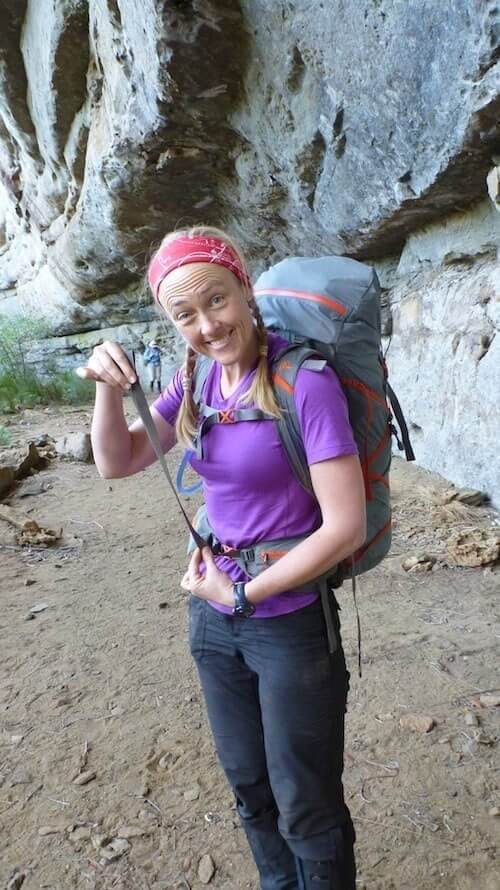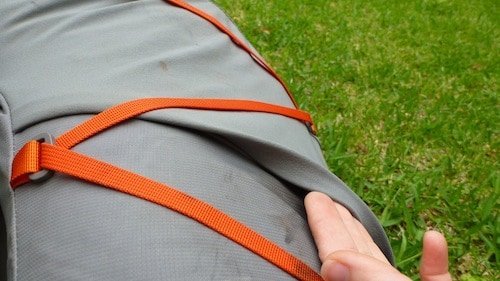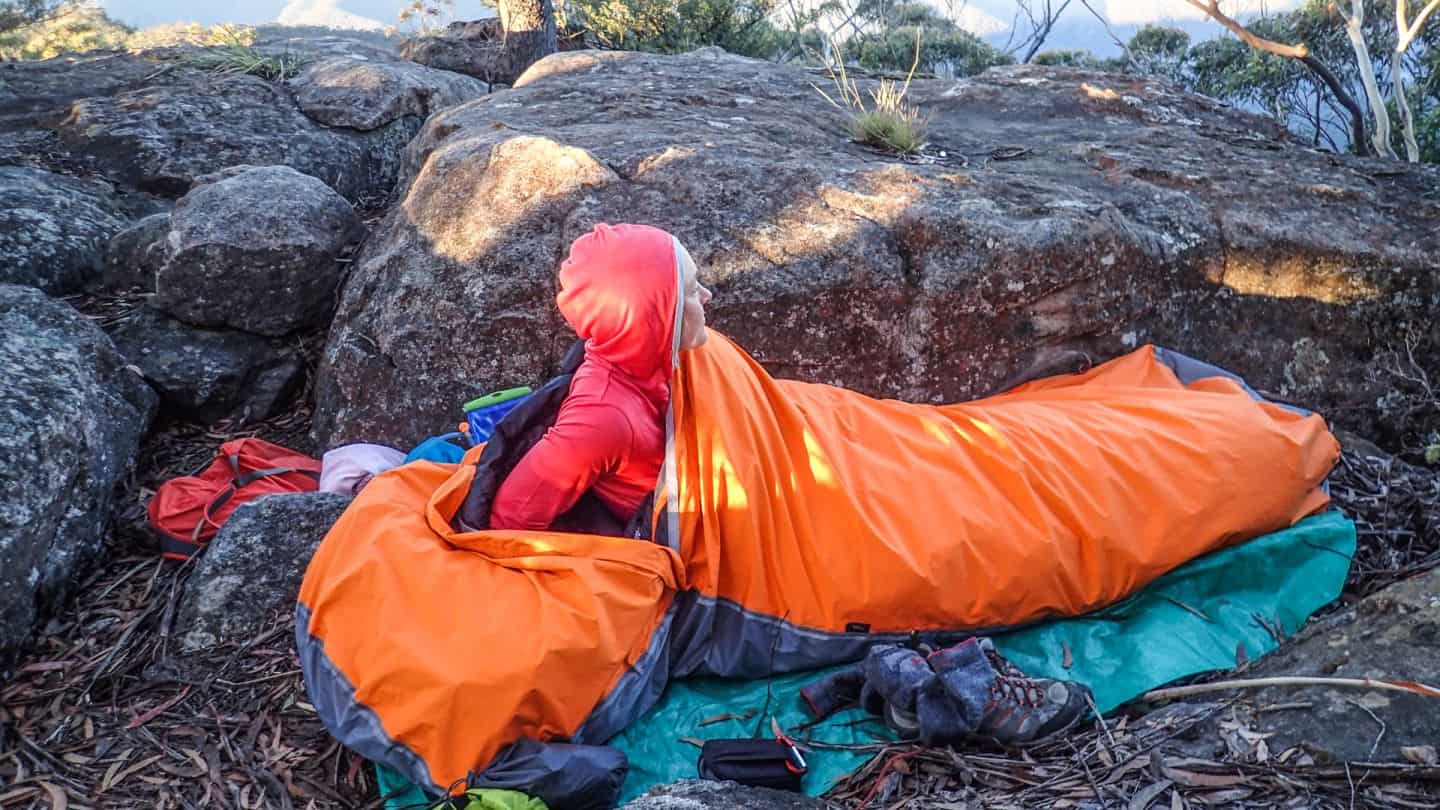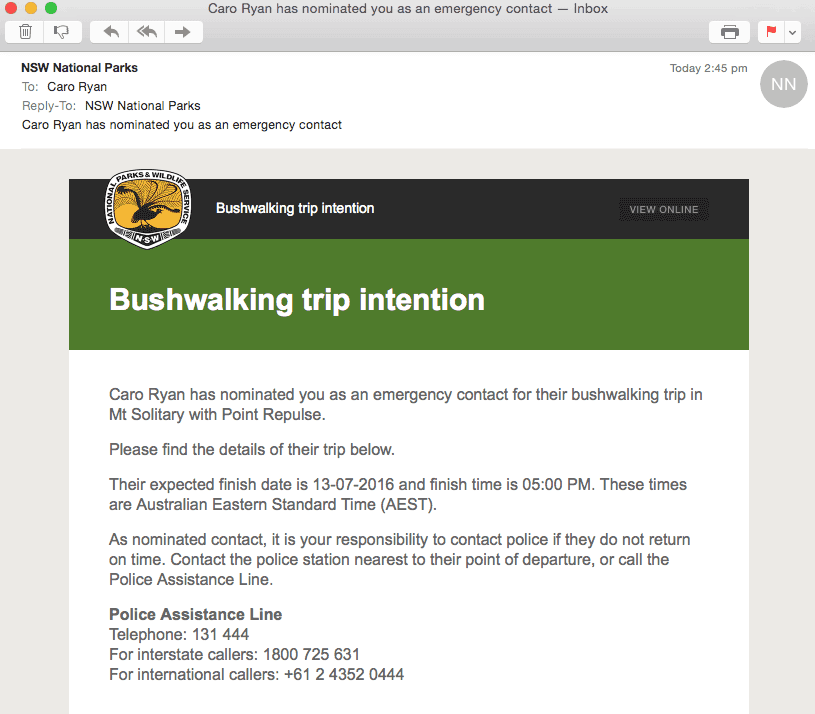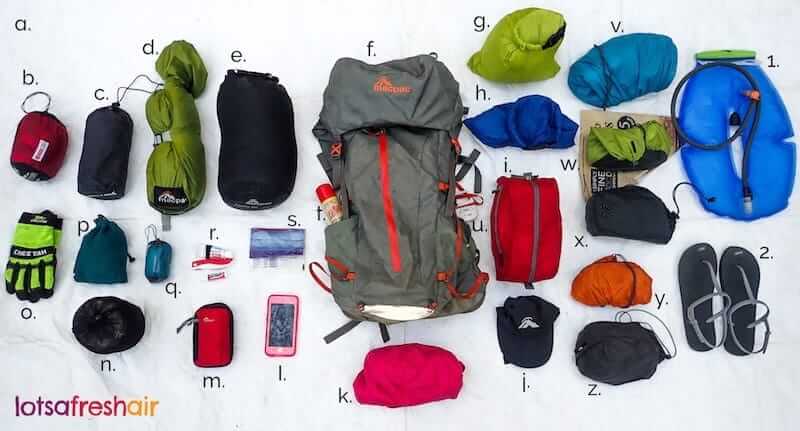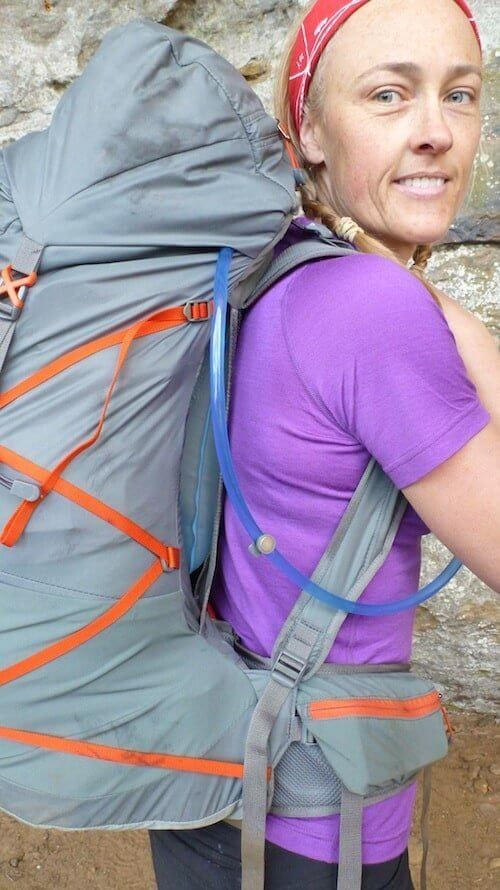
Manufacturer: Macpac
Product: Macpac Tasman 45
Link: Macpac Product Info
Empty Weight: 1.1kg (size 2)
RRP: AUD$299
Test Packed Weight: 13kgs (incl 2 litres water)
Test Date: 4-6 October 2013
Location: Ettrema Wilderness, Morton National Park, NSW, Australia
Terrain: Everything! Firetrail, tracks, off-track scrub (light to extreme including Hakea and Banksia) rock scrambling, narrow slots and cliff lines, creek crossings and bitumen roads!
Introduction
When I first started bushwalking in 1999, completely green and eager to learn, the word on the track from those with greater knowledge in my Bushwalking Club, was to buy a Macpac Esprit pack, along with a Microlight tent.

In the 14 years since, the types of gear on the market and the demands of the outdoors community has undergone enormous change.
From the early pioneering days, even before the legendary Tiger Walkers forged new ground in the Blue Mountains, (when a pack was made from an old pillowcase with two straps attached), to today, it feels as though the majority of the change has taken place in the past 5 years.
I’m wondering if this is due to the increase in new manufacturers eyeing a growing market for outdoors pursuits, the shrinking global marketplace or the influence of an ever vocal online community. With the growth of the internet, us consumers are not restricted by what our local retail outlet sells. We share ideas and experiences with people all over the world and if we are so inclined, can now research products, materials and design and hear first hand from users.
How I’ve changed
Back in 1999, what I went looking for as a consumer, was a product that was bomb proof. The thought about lightweight never crossed my mind. Without realising it, I’d entered the mysterious world of the notoriously tight-arsed bushie. This meant that I viewed my gear as an investment in this brave new world I’d entered and if I was going to spend $400 on a piece of gear, it was going to last me a lifetime. Dammit.
What Macpac were known for back then was exactly that. Bomb proof gear that would last a lifetime.

My first pack was a Macpac Glissade. A heavy duty 75L mother of a thing that weighs around 3kgs (6.6lbs) empty, using a traditional hardcore canvas fabric. It saw me through many adventures and I still have it, and true to its origins, it shows very little sign of wear… But to be honest, I haven’t used it in over 8 years. I feel a little guilty every time I go into my storeroom and see it hanging there on the wall… I imagine it’s voice, saying, “Pick me, pick me!”, whenever the light goes on. Sorry old friend, you’re just too heavy these days.
Nowadays, not only are outdoor consumers better informed about options, materials and products, we’re also a lot wiser about our own bodies and their limits. We know, by looking at those before us, that knee joints can wear out and that this damage can be aggravated by carrying heavy loads. For those of us who spend most weekends each month carrying a pack, then 50 years of ‘a few extra kilos’, can really take its toll.
Whatever the reason, the focus for many in the outdoors community has turned away from buying a single bomb proof piece of kit to last a lifetime – to buying a smartly designed, lightweight, comfortable product that will give the most comfortable experience now, and for our knees… into the future.
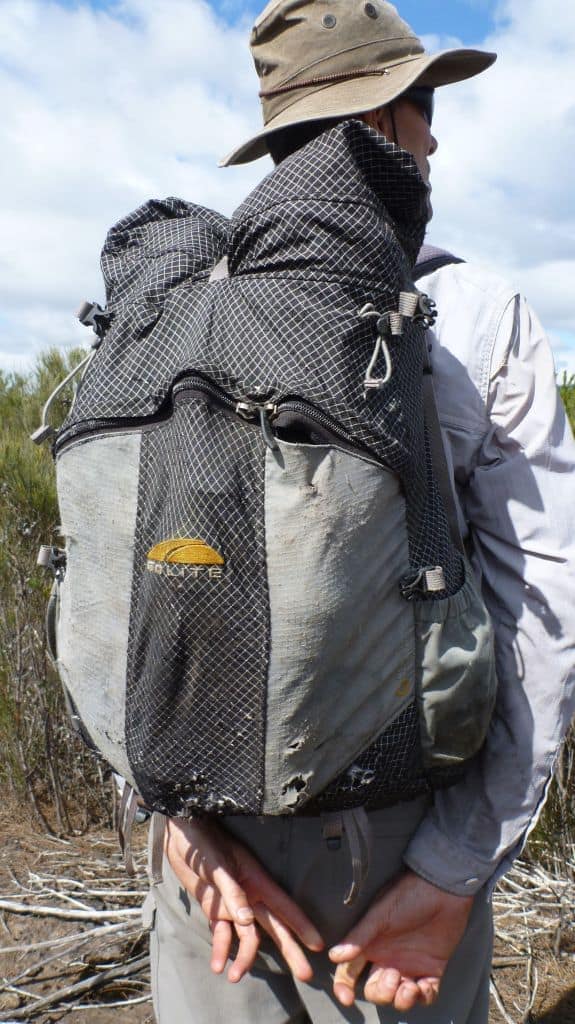
This decision comes with the knowledge that, depending on the places we hike in, it may not be so long lasting and depending how often we’re in scrubby, off-track conditions, we may need to replace it in 5 years or make running repairs along the way.
Besides, in 5 years time, design and technology may well have taken another leap and I can get a pack half the weight and twice the capacity!
My walking buddy Paul summed it up pretty well (whilst carrying his beaten up GoLite pack), “I’d much rather replace my pack, than my knees.”
The Philosophy Corner
This is a significant change to how things used to be and I can’t help but weigh up the conflicting interests of recycling, land-fill and the environmental impacts of such high turnover consumerism, for a hobby that strives to leave no trace. To over simplify it, is it personal interest (health/joints/comfort and long term ability) versus the greater good (the environment). Hmmm, all food for thought indeed and one that could make a good discussion point around the campfire/stove. I’m interested to hear your thoughts in the comments section below!
That’s quite a long winded way of introducing my review of the new Macpac Tasman 45L.
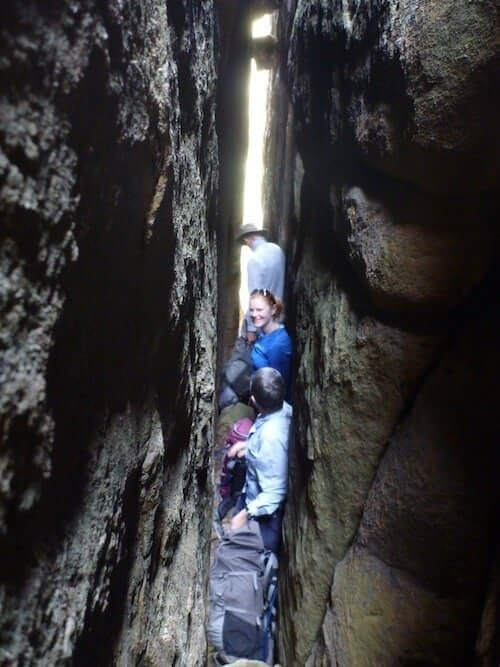
The Basics

This seems to be Macpac’s first serious foray into the brave world of lightweight hiking gear. At the outset, it’s important to understand where this pack sits in the world of lightweight outdoors gear. It’s not down the Tyvek ie. the ultra lightweight end of things, where enthusiasts tinker on grandma’s old Singer and new micro-businesses are popping up as a result. This product sits comfortably between ultra lightweight and traditional – let’s simply call it Lightweight for now.
Everything about this pack is new and different for Macpac, although there are significant nods to design influences from other brands such as Deuter, Osprey and even Lowe Alpine, it thankfully still holds true to what I perceive the Macpac brand has always been about. Smart design, good workmanship and innovation. More than anything, it says to me that they’ve clearly done their homework and have looked at how they can apply the Macpac know-how to improve on what is already out there.
I love when I look at a product and I find myself saying, “Someone’s been thinking”. This is obvious in this pack. It feels as though every aspect and element has been well thought through, tested, pared back, simplified and then utilised. As with any lightweight design, everything is there for a reason.
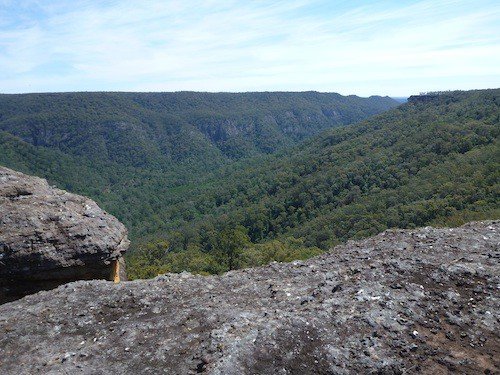
Harness
The most obvious new feature in this pack is what they call the Supertramp harness system. In every other Macpac pack I’ve owned, their harness has always been heavily padded and a point of both balance and comfort. To be honest, this was one of my concerns about this pack and something that I was keen to test. Gone are the chunky, cushioned shoulder straps and they’ve been replaced with <1cm thick lightweight alternatives.
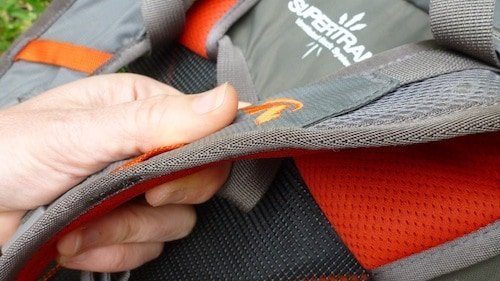
But the real change in this harness is what I’ve affectionately called the, “no sweaty back”, style of design, that has been seen in Deuter packs for some years and more recently, Osprey day packs.
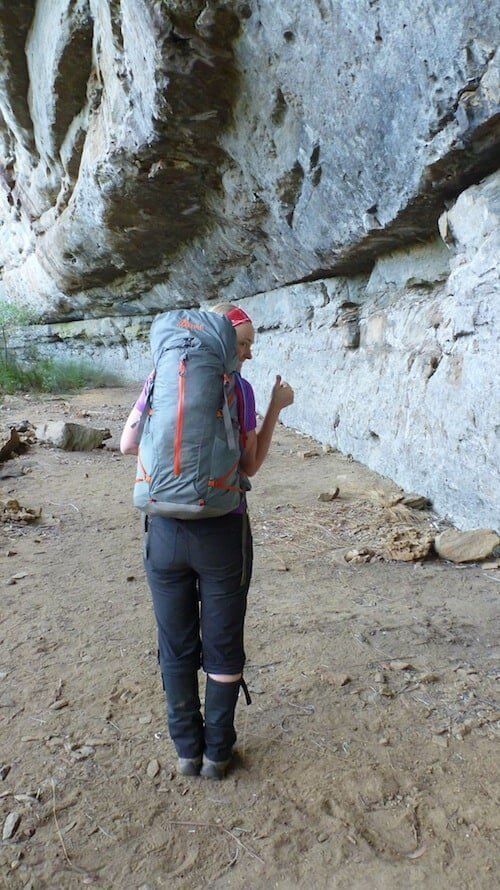
Through utilising a curved back and strong mesh, they’ve achieved a style of harness that provides a gap between the wearers back and the pack. Whereas the Deuter pack that I’ve used in the past achieved this with a solid piece of curved plastic, Macpac have done this with two external (yes, external) frame spines.
Comfort
In wearing the pack, I was very surprised to find the harness super comfy, even without all the traditional padding.
Perhaps because of the minimal padding, the manufacturer’s guidelines give this pack a range of 6-14kg for a comfy user experience. I was testing it with 13kg (11hrs on our feet on day 1 and 8hrs on day 3) which was fine. The 45L capacity is going to mean that you need to be choosy about what you take anyway, so unless I make stupid packing decisions, I can’t see myself pushing this weight up any further.
One of the slightly unusual sensations I found though, was that when travelling along a firetrail at good pace (5.5-6km/hr), the pack seems to have a certain “bouncy” characteristic. Although this might sound a negative, after a while, I came to
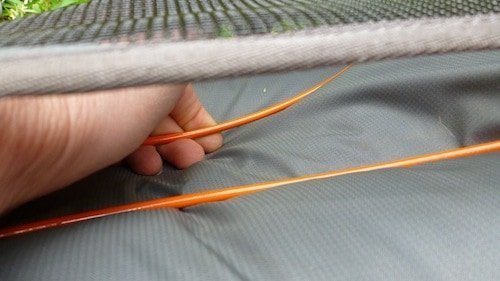
actually enjoy it. The bounce didn’t come as a shock back down on the shoulders and hips with each step, rather the opposite, it actually felt like I had added momentum and a lightness of step. I know, odd.
Fabric
I’m not one of those gear gurus who spend hours researching the science behind each of the components in a piece of gear and can argue the relative pros and cons of each one. So apart from seeing how the Titan Grid™ Fabric performed in the field, I can’t really say anything about it.
“Our lightweight and durable Titan Grid fabric is a 100d high tenacity nylon The silicon outer coating and PU inner coating add weatherproofness and at only 116g/m2 it is ideal for applications where conserving weight is critical. Compared to similar weight fabrics Titan Grid offers improved durability as the grid structure and raised fibres enhance its ability to absorb abrasion.” (Source: Macpac website)
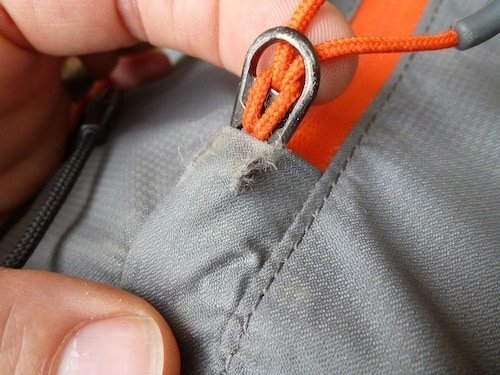
Please watch the video of my gear test, as you will see that I put the pack through much more than the average hiker would expect to do on a weekend trip. The fact is, not everyone likes to go off-track, which is fine. However, the shots of the wear on the zipper will make sense when you see what I put it through!
Hydration Options
With only 45L of internal space to play with, something I really liked about this pack is that it gives me the option of putting my hydration bladder on the outside, hanging securely within the gap between the mesh and the spines. The simplicity of using this option is made easier by way of an access they’ve created from the inside. There are two hooks and a robust piece of velcro to help hold your bladder in place. Yep, I was dubious about this concept at first. Wouldn’t the water get warm from my back? Will my back get wet? Is there more potential to pierce or burst the bladder?

Well, I can report that after a couple of hours of walking in full sun, on a day of 28 degrees, I am converted. One of the arguments against hydration systems is that you can’t see how much you’re drinking, but the handy thing with this design is that not only does it free up internal space, but I can easily feel how much I’m drinking by simply reaching around, feeling the bladder and giving it a bit of a jiggle. If this concept doesn’t work for you, they haven’t locked you into it. The pack also includes the traditional internal pocket for stowing the bladder. Both options work with a hose hole on both the left and right shoulders.
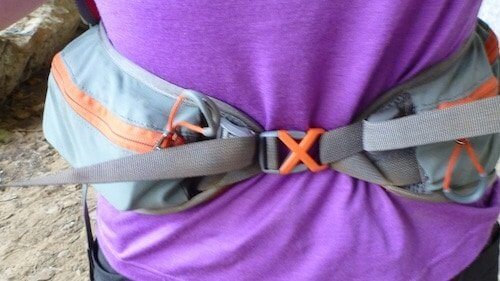
HOT TIP
- It’s a good idea to pack any solid or hard objects (like a billy) deep inside the pack and surround it with soft things to minimise wear on the outside fabric, especially if you’re going to be dragging it over rocks!
WHAT I LOVE
- Hydration bladder stowage in the harness
- Zip pockets on the hip belt that are a good size. Perfect for camera, compass, snacks and chapstick, whilst not being so big to get in the way of big step ups and rock scrambling.
- Lightweight at 1.1kg (2.42lbs). Yes, I independently checked this. See image.
- Fold over edge in side stretchy pockets. Less chance of things falling out.
- That my rain jacket fits in the outside pocket. Doesn’t get stuff inside wet.
- Ample space in the lid pocket. 3 days of snacks, sunnies, safety glasses (for scrub) sunscreen, scrub gloves, torch, toothbrush, notepad, GPS/iPhone battery, keys… with room to move.
- Supertramp harness. Super comfy, body hugging and bouncy.
- It’s a frivolous thing, but I like the overall look and colours (grey/orange).
- I can still stash my map case behind my back in the harness as I walk.
JURY’S OUT
- Side compression straps being all in one piece. If it breaks in one spot, does this mean the whole side compression is unusable?
-
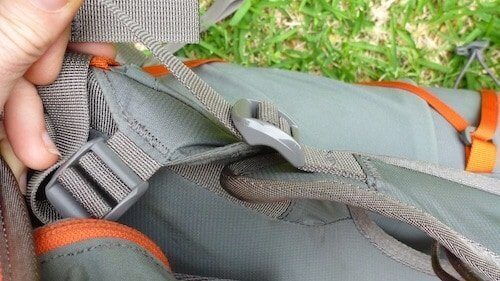
Shoulder straps couldn’t really be tightened any further I’m a tall gal at around 177cm (5’9″) and the size 3 pack was a good choice, although the shoulder straps were at their ‘almost’ tightest. It would be good to have some lee-way of an extra 5 cm of adjustment.
THE VERDICT
So, are my 3 days giving the Tasman 45L a workout going to change my behaviour?
Hell yeah!
As much as I still love my Pursuit 55L, it’s going to be reserved for times I need the extra space, such as longer trips. I’m moving across to the Tasman for my ‘every weekend’ type pack.
All I can say, is that if this is Macpac’s first dive into lightweight packs, I can’t wait to see what’s next!
Caro is a Macpac Ambassador and super grateful to her awesome bushwalking buddies from www.sbw.org.au, for putting up with her muttering to herself on camera in wild places.
